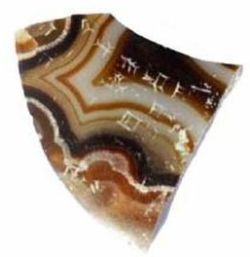This artifact was likely a gift
if anything to an important shrine. What
it does is clearly confirm the existence of active sea travel between the
Levant and Malta which is a
natural stopover on the way to Gibraltar . The time was during the posited heyday of the
Atlantean trade empire that we have shown to be operational throughout both the
Atlantic littoral and the Mediterranean littoral for a period of around two
thousand years ending abruptly with Hekla in
1159BCE.
Please note that the high period
of the empire likely was during the last five centuries and that it was a
maritime trade driven system completely unlike any land based empire of the
time, such as existed and those were scant, and operated on a common currency
using copper ingots and a palace based factory system such as exemplified by
Crete and Mycenae.
Unfortunately it appears that
cuneiform tablets were not used by this empire, or we would have an
imperishable record of their actual sites.
Instead we have stone works wherever they prospered.
Rare Cuneiform Script Found on Island of Malta
Thu, Dec 22, 2011
A small-sized find in an ancient megalithic temple stirs the
imagination.
Excavations among what many scholars consider to be the world's oldest
monumental buildings on the island
of Malta
Led by palaeontology professor Alberto Cazzella of the University of Rome Nippur
The location of the find makes it the farthest west the ancient script
has ever been discovered, raising questions about how it ended up in the remote
location. Some scholars theorize that the inscribed stone was likely
looted from the temple of Nippur during military conflict and then transported
westward through an exchange of hands by Cypriot or Mycenaean merchants,
thought to have had trading relations with the central Mediterranean at the
time.
Moreover, because cuneiform-inscribed agate would have been considered
highly valued during the late Bronze Age, its presence within the Tas-Silg
sanctuary, according to some scholars, suggests that the sanctuary had a much
wider significance than for those who lived on Malta Mediterranean during the Phoenician and Roman eras.

No comments:
Post a Comment